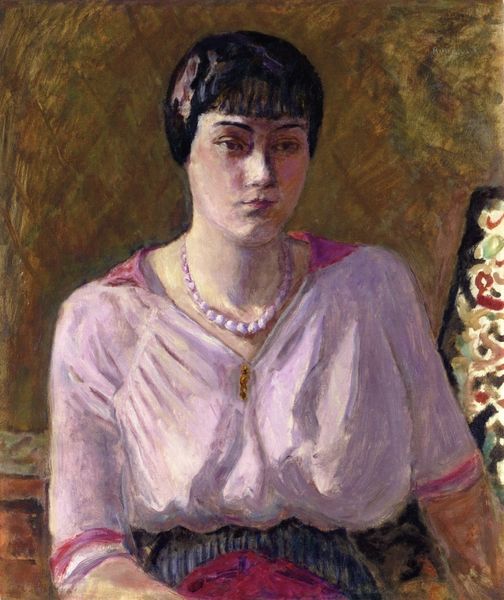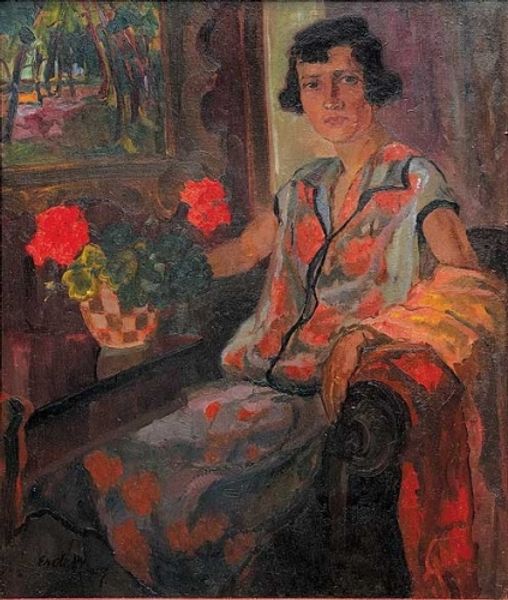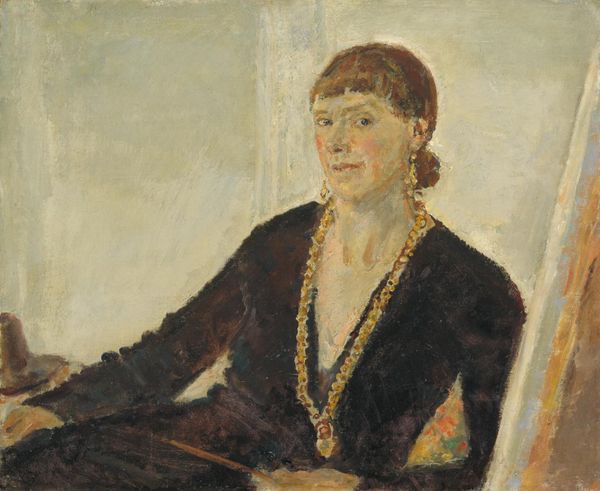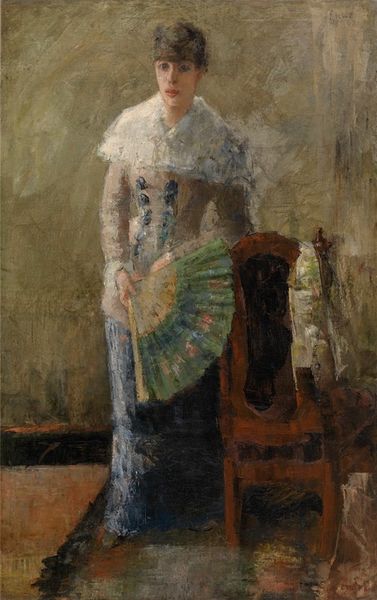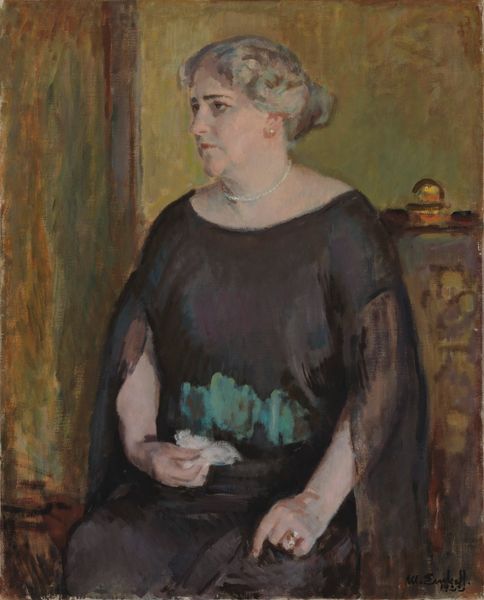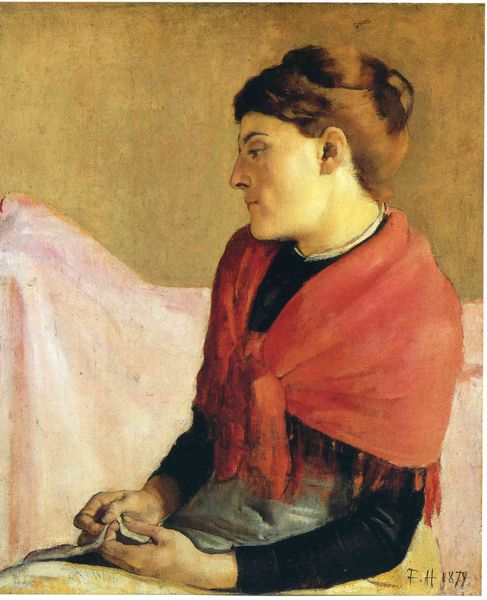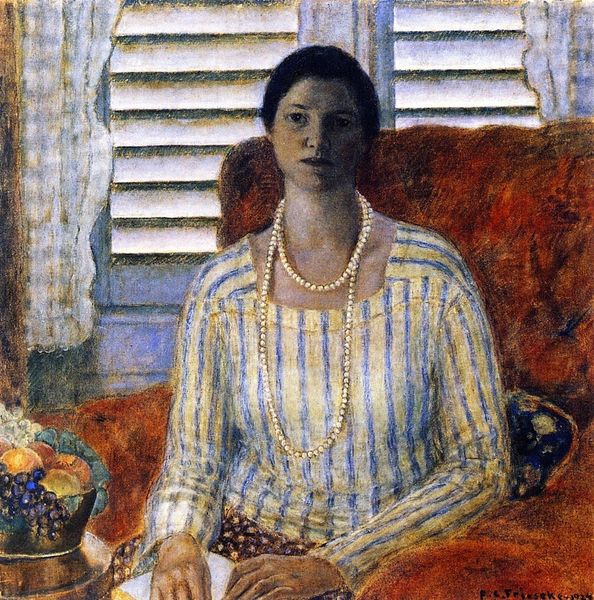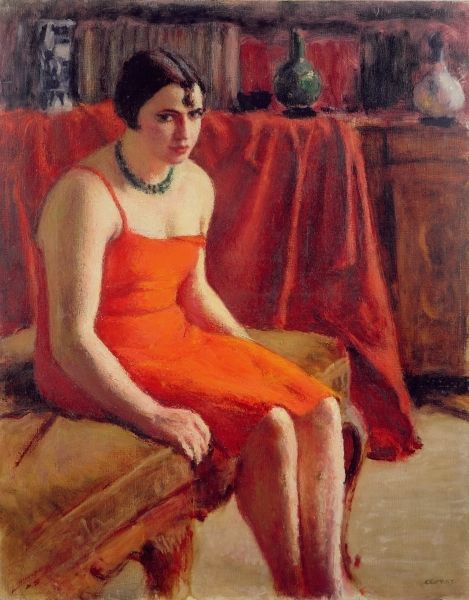
Dimensions: 81.5 x 85 cm
Copyright: Public domain
Editor: This is "Madame Claude Anet" by Pierre Bonnard, painted around 1910, using oil paint. I’m struck by how textured it is, the brushstrokes feel so deliberate. What do you make of it? Curator: I'm drawn to the very visible labor in this portrait. Bonnard's build-up of oil paint is almost sculptural. Think about the materiality of the pigments themselves: where did they come from, and how were they processed? Also, look at how the creation process reveals Bonnard’s intention in showing this woman within an intimate setting. Editor: That's fascinating, I hadn't considered the materiality of the pigments. Curator: And what about the social context? Oil paint, as a medium, was historically associated with wealth and the academy. But Bonnard uses it in a way that feels very personal and less formal than a conventional society portrait. Editor: So, are you suggesting he's kind of subverting the traditional purpose of oil painting by portraying someone in a less staged manner? Curator: Exactly. By showing the marks of his labor so plainly, he draws attention to the act of creation itself. Consider, also, the labor involved for Madame Anet, presumably someone within the domestic sphere at the time, and perhaps even a subject of that domestic labor. Editor: That's a great point; seeing it as Bonnard displaying the artifice of portraiture, not just representing Madame Anet's likeness is illuminating. I now wonder about her life. Curator: Precisely! Thinking through process and materials gives us a richer understanding. Editor: Definitely. Thanks; this has been really helpful for approaching it differently!
Comments
No comments
Be the first to comment and join the conversation on the ultimate creative platform.
